Ink art is something I have recently discovered and enjoyed a lot. There are two types of inks popular among artists which are acrylic and alcohol ink. So, you might be wondering what the differences are between acrylic and alcohol inks.
Alcohol ink and acrylic ink differ in their composition. Alcohol ink is dye-based and nonarchival while acrylic ink is pigment based and archival. Alcohol ink is used to create unique delicate paint layers while acrylic inks are used in various applications such as airbrushing.
Even though alcohol inks are nonarchival by themselves, there is a way around making them archival. Also, acrylic inks will be much easier to build layers with than with watercolors.
What is acrylic ink and alcohol ink?
Acrylic ink is acrylic paint in liquid consistency. It creates thin yet highly pigmented layers of colors. Acrylic ink dries into a water-resistant thin paint film. Thus it can be overpainted in multiple layers without disturbing the ink layer underneath.
Acrylic inks are perfect for artists who like to paint in ink-like consistency. It is easier than painting with watercolors because you can build up layers with much ease. Painting over mistakes will be easier with opaque acrylic ink. It is such a fun and perfect way to create ink paintings.
I have written a whole article comparing all the water-based paints to acrylic paint. You can find a detailed comparison of each water-based paint and acrylic paint including a nice summary with a handy chart.
Alcohol ink on the other hand is dye based and is closely bound to the surface once dry but can be reactivated with alcohol. It creates beautiful transparent glazes of paint or opaque spots of paint. Alcohol inks work on non-porous surfaces like photo paper, ‘Yupo paper’, ceramic tiles, etc.
If you try to work with alcohol ink on a porous surface ink will be soaked into the surface rather than moving. However, creating sharp lines with alcohol inks is impossible because the ink spreads as soon as it hits a surface.
Alcohol inks are different from traditional dye-based inks like drawing ink because the dye is dissolved in alcohol as well as in resin. The resin creates a film that is loosely bound to the surface, rather than solely soaking into a surface. Since drawing inks doesn’t have a resin in them, they will be only soaked into the surface.
Difference between alcohol and acrylic ink
Acrylic ink and alcohol inks are two different art mediums with different uses. When we know the properties of each ink, it will be easier to incorporate these inks into our artwork. Below I have included a summary of the differences between alcohol and acrylic inks for easy reference.
| Aspect | Acrylic Ink | Alcohol Ink |
| Composition | Made with pigment, acrylic resin, water, and other additives | Made with dye, resin, alcohol, and other additives |
| Consistency | Less thin | Thinner |
| Transparency | Can be transparent or opaque | Can be transparent or opaque |
| Reactions with alcohol/water | Can be thinned with water, but water-resistant once dry | Can be thinned and reactivated with alcohol, but waterproof once dry |
| Drying qualities | Dries slowly in 20 min | Dries fast less than 20 min |
| Layering | Building thin transparent layers is easy | Not the best for layering |
| Uses/ applications | Used for watercolor techniques, acrylic pour art, airbrushing, and inks in pens | Used to create unique, transparent, and delicate paint layers |
| Surfaces | Paper, canvas, board, plaster, wood, and fabric | Yupo paper, Nara paper, Dura-Lar sheets, ceramic tiles, plastic, glass, vinyl, plastic poster board, resin |
| Lightfastness/ permanency | Excellent lightfastness; will not fade for decades to come | Not lightfast and fade over time. UV-resistant varnish can prevent fading |
| Price | 5.16 USD to 6.56 USD per 1 oz | 2.77 USD to 6.28 USD per 1 oz |
I have used Liquitex acrylic ink and Brea Reese alcohol ink in Prussian blue color for comparison. Even though they have the same color name, the pigments and dye colors differ.
Composition
The acrylic ink composition is the same as acrylic paint. It is composed of pigments (to give color), acrylic polymer binder (to bound pigments together), water, and other additives. Pigments are dispersed in acrylic polymer binder and water emulsion. Once the water evaporated the acrylic binder traps pigments in a honeycomb structure and bonds to the surface. This is called an acrylic paint film.
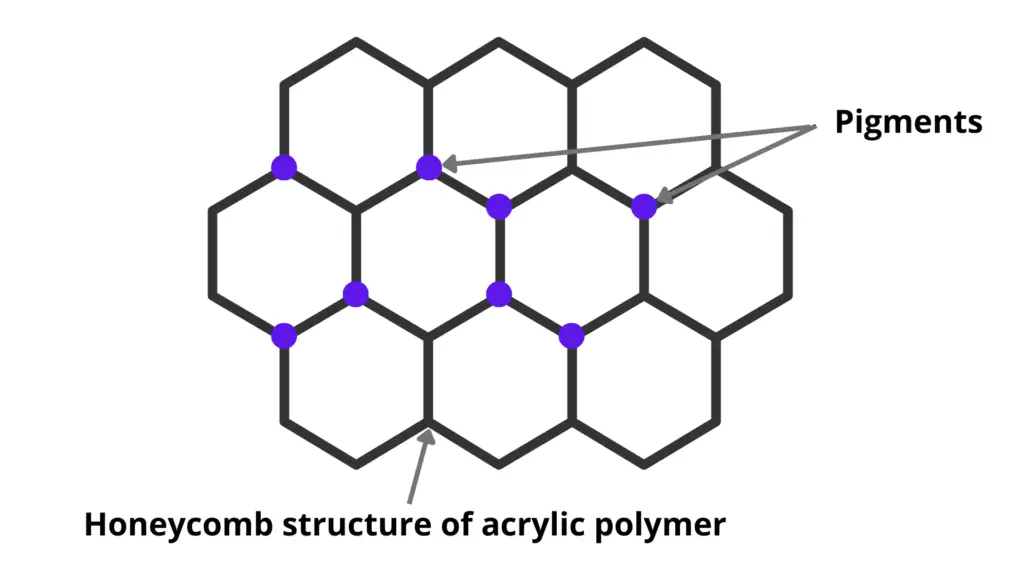
When all the water is evaporated acrylic paint film is permanent and water-resistant on the surface. Thus it cannot be reactivated with water. As acrylic paint is very thin in consistency it has a very thin acrylic paint film. Just like acrylic paint, acrylic ink does not penetrate through the surface but sits on top.
Alcohol ink is made from dye, alcohol, resin, and other additives. Pigments used in acrylic inks or paints are not soluble in a solvent. Because they are larger particles. But dyes that are used in alcohol inks are very fine particles that can be dissolved in a solvent.
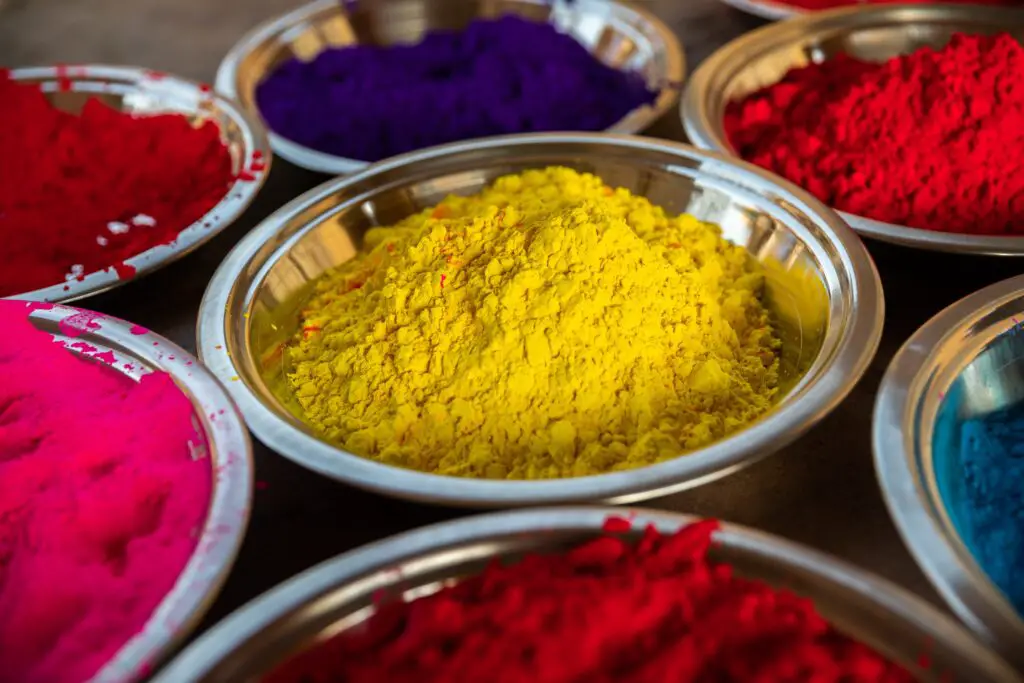
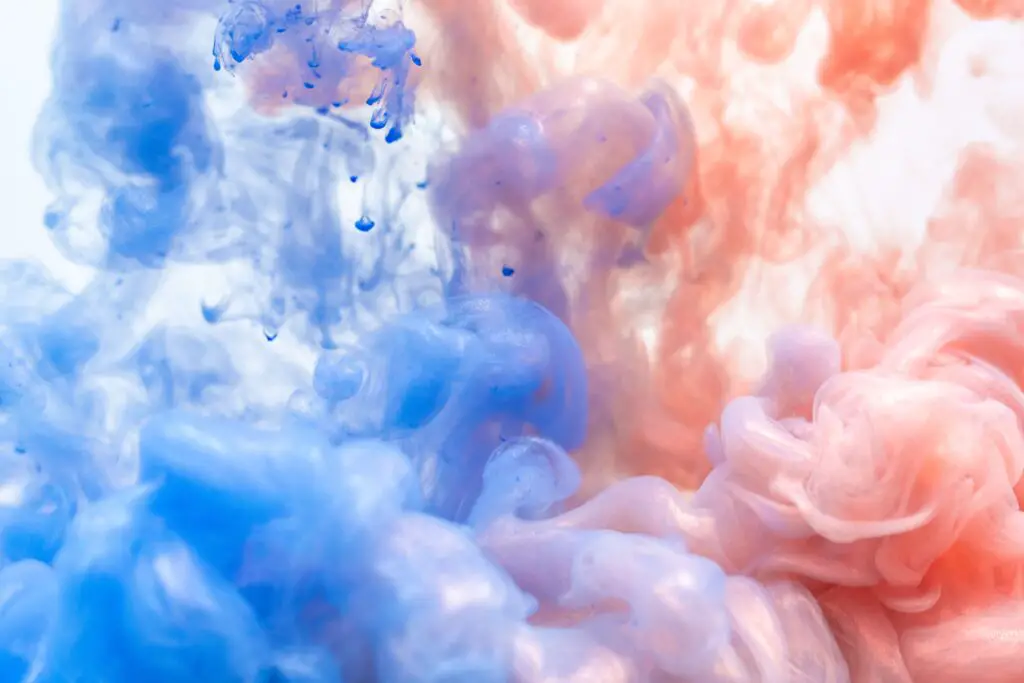
Likewise, dyes used in alcohol inks are dissolved in alcohol along with a resin. The resin helps to make a loosely bound acrylic ink film on the surface which can be reactivated again with alcohol.
Consistency
Alcohol inks are very thin in consistency than acrylic inks. When a drop of alcohol inks hits a surface it immediately spreads on the surface. This is because alcohol has a low surface tension than water. It also has a dye that wants to soak into a surface rather than sitting on top of the surface.
Acrylic inks do not spread or soak into the surface immediately but sit on top of the surface as a droplet. This is because acrylic inks have water which has a high surface tension than alcohol.
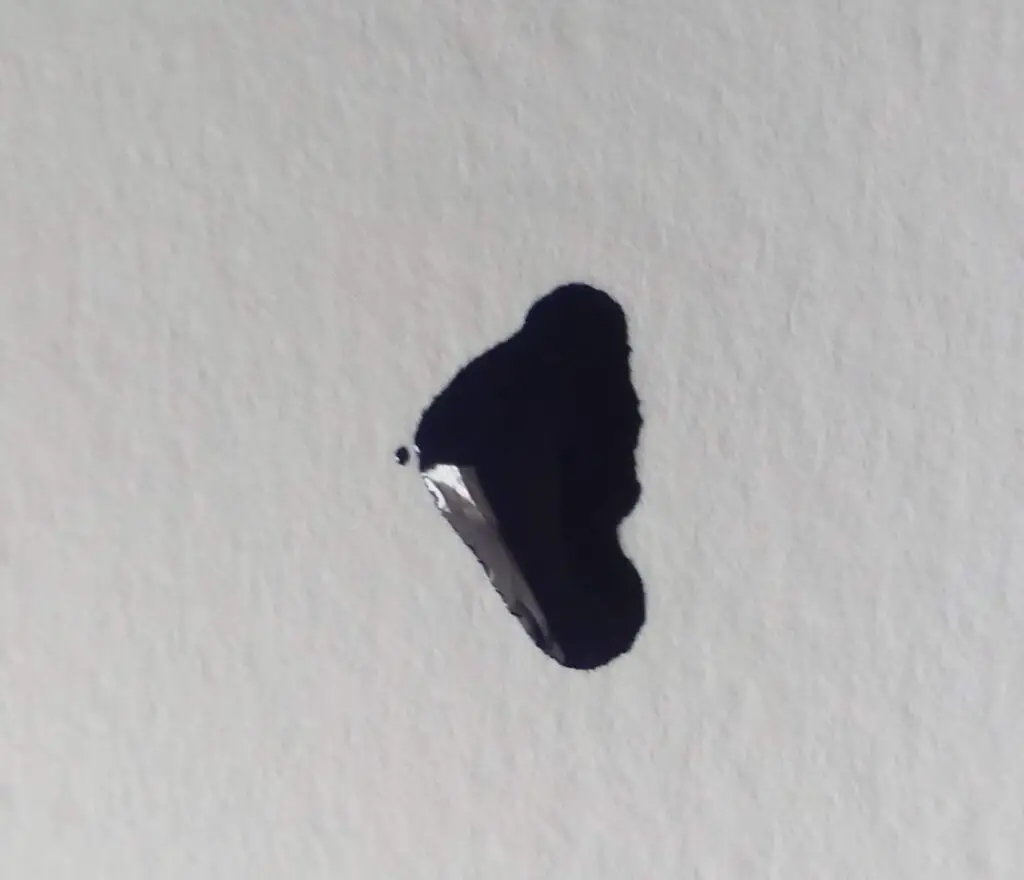
Transparency
Different alcohol and acrylic inks can be transparent or opaque. However, both of them are applied transparently on the surface. Alcohol ink is reactivated with alcohol to thin down and make transparent velvety ink layers. Acrylics inks are also applied in inky transparent layers. You can also find the opacity information of acrylic ink on the bottle but not for alcohol inks in most cases.
Reactions to alcohol and water
Acrylic inks readily dissolve in water. But it does not dissolve with alcohol. When alcohol is mixed with acrylic ink it clumps together. However, once acrylic ink is dry it can be reactivated with some alcohol. This is easy to do on a nonporous surface rather than on a porous surface like paper.
Alcohol ink can be thinned, dissolved, and reactivated with alcohol. Alcohol is used in alcohol ink art to redissolve alcohol ink once dry. It creates beautiful transparent layers of colors. Alcohol ink cannot be reactivated with water once dry. So both acrylic and alcohol inks are water resistant once dry.
Drying qualities
Alcohol ink dries very fast. As soon as it hits the surface it starts to spread and start drying. However, some areas will remain tacky even after 20 minutes. Acrylic inks also take about 20 minutes to dry and do not dry as fast as alcohol inks.
Alcohol inks do not wash out with water after drying either on a porous or nonporous surface. Alcohol inks can wash out with only alcohol or alcohol ink blending solution.
Acrylic inks are water resistant just like acrylic paint. But if painted on a nonporous surface it will easily peel off or can be scratched off after drying. It does not stick to nonporous surfaces well. The best surface for acrylic inks will be porous surfaces like paper or canvas.
Finishing
Alcohol inks art has a transparent, velvety-like finish to it. As alcohol ink can be faded away, coating it with UV-resistant acrylic varnish would be the best. First, apply 3 coats of Krylon Kamar varnish (The best deal on Blick Art Materials) because alcohol inks tend to seep through other varnishes. Then apply Krylon UV Archival Varnish (The best deal on Blick Art Materials) to resist fading. Make sure to dry between each coat.
Acrylic inks have an inky finishing to them. They are more like watercolors but layering is much easy with acrylic inks. You can finish off the acrylic ink painting with a varnish. You can use any acrylic varnish for this purpose.
Layering
Layering is much easy with acrylic inks. Acrylic inks are not reactivated by painting over or with water. Therefore, unlike watercolors, you can easily build transparent inky paint layers that cannot be reactivated with water.
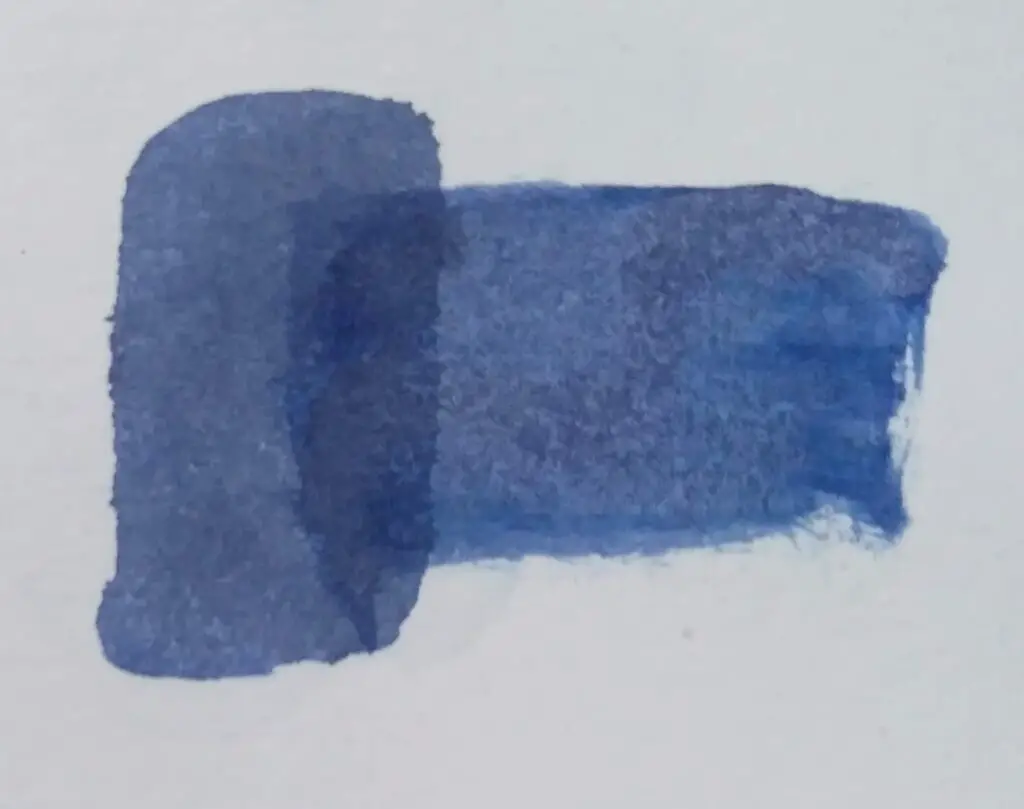
Layering can be tricky with alcohol ink. Because when over painting or layering over with another layer of alcohol ink or alcohol itself, the previous layer will be reactivated and may change its qualities. However, this reactivation is most of the time a part of the alcohol ink art. You can create beautiful transparent paint layers by reactivating alcohol ink.
Some artists use both alcohol and acrylic inks in their paintings. They use acrylic inks to create sharp lines that do not reactivate with alcohol. However acrylic inks can be reactivated with alcohol if you work too much on them.
As an example, you can paint the sharp stem lines of flowers with acrylic ink and then do the flowers with alcohol ink. The two would not mix and hold their shapes.
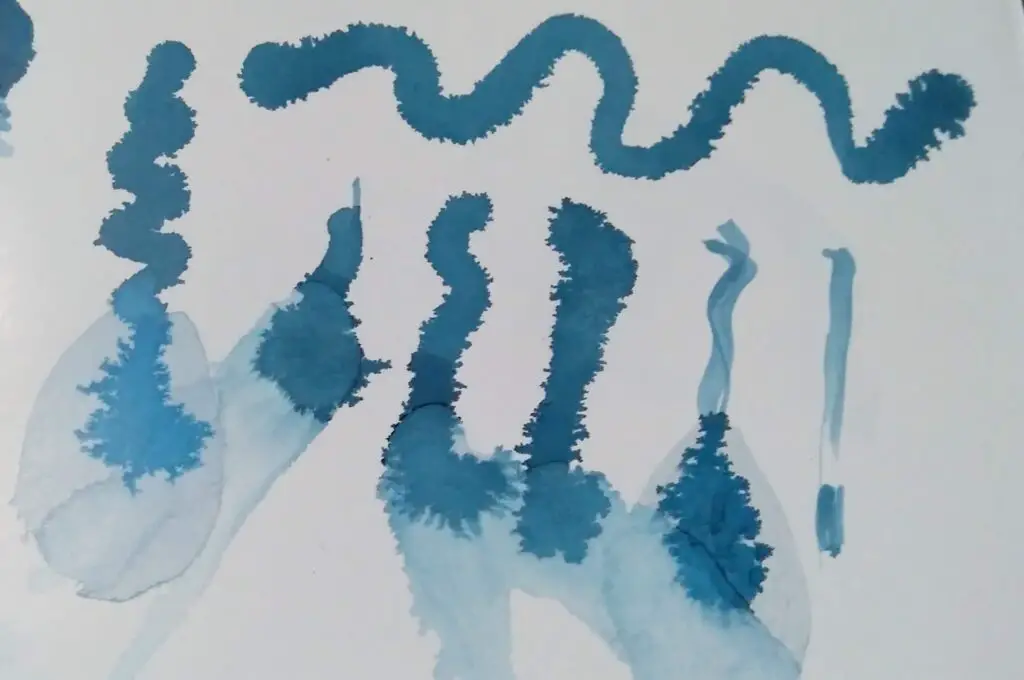
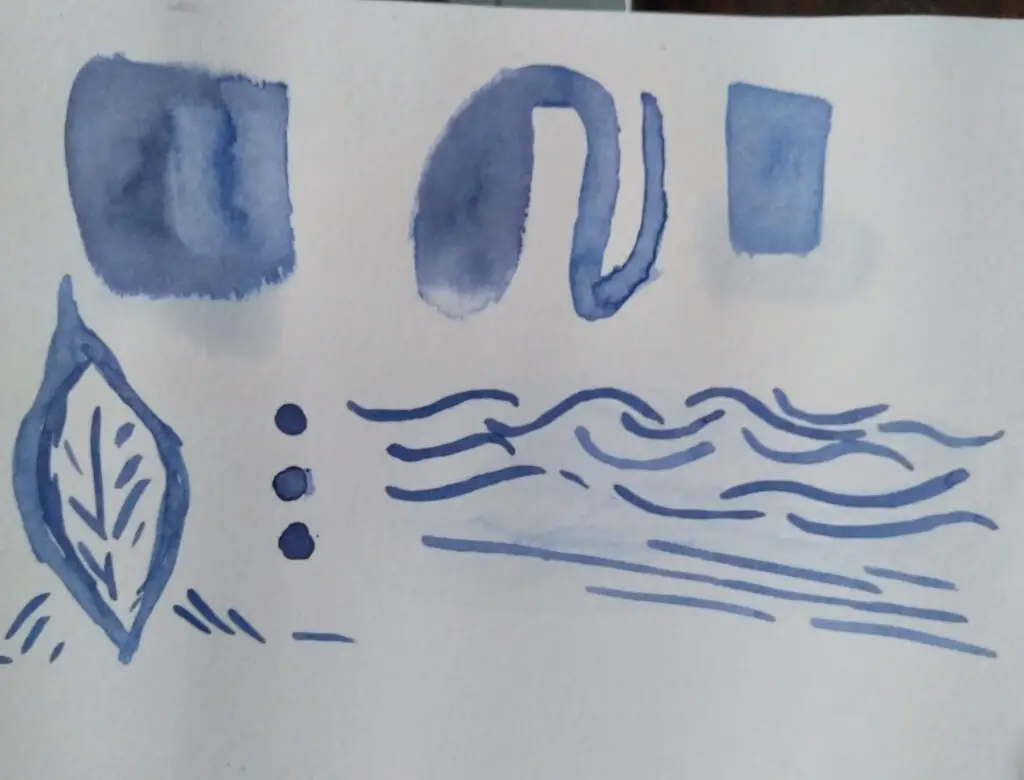
Uses/applications
Alcohol inks are used to create transparent and delicate layers of paint. There are several ways of applying alcohol inks to the surface. You will need the alcohol ink and a reactivating solution for this. A reactivating solution can be alcohol or a ‘blending solution’ containing alcohol that you can purchase.
You can first apply the ink and then alcohol or the blending solution. But this way alcohol ink will not spread much. Another way is to apply the alcohol or the blending solution first and then apply ink on top. This way ink will spread well on the surface.
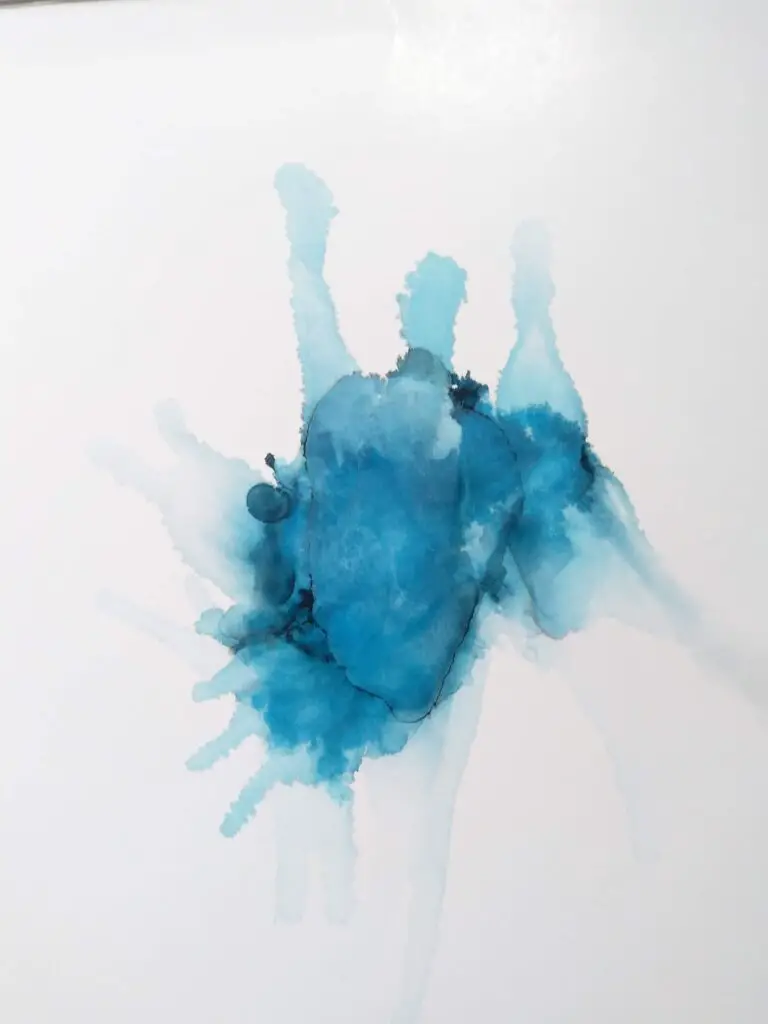
You can use alcohol inks where you need more spread of the colors. On the other hand, you can use acrylic ink for sharp paint lines. It is best to paint in thin layers like in watercolors. It will be easy to add layers and correct mistakes with acrylic inks. So painting with acrylic inks will be much easy than watercolors.
Some artists use both acrylic and alcohol inks in the same artwork. They use the spreadability of alcohol inks and the ability to create sharp lines of acrylic ink in the art piece. They use acrylic ink to create stems and leaves which need some cleaner paint lines. Also, alcohol inks can be used in resin art.
Acrylic ink can be used very thinly as it is or diluted with water. Acrylic ink can be used for watercolor techniques, acrylic pour art, airbrushing, and inks in pens.
Surfaces
Alcohol inks are used on nonporous surfaces like photo paper, Yupo paper, Nara paper, Dura-Lar sheets, ceramic tiles, plastic, glass, vinyl, plastic poster board, resin, etc. If porous surfaces are used for alcohol ink paintings, alcohol inks will seep through the porous surface and stain the paper.
Acrylic inks are used on porous surfaces like paper, canvas, board, plaster, wood, and fabric. Acrylic inks do not stick to nonporous materials like glass, plastic, or glossy paper. It will not grab onto those surfaces and rather sits on top of the surface. So you will have to try different surfaces for alcohol and acrylic inks.
Lightfastness/permanency
Acrylic inks are lightfast and permanent, just like acrylic paint. They are made from lightfast pigments that have a lightfastness rating of I or II meaning acrylic inks will not change or fade for the decades to come. You can increase the lightfastness more by adding a UV-resistant varnish on top.
However other traditional inks including alcohol inks are made from dyes that are not lightfast. So you need to work the way around to make your ink artwork archival. As already mentioned before you can use Krylon Karmar varnish along with a UV-resistant varnish to prevent alcohol ink from fading away. You can also get a digital copy of your alcohol ink artwork where you can take printouts later.
Price
The acrylic ink price ranges from 5.16 USD to 6.56 USD for 1 oz of acrylic ink. The more expensive the ink is the higher the quality. Alcohol ink price ranges from 2.77 USD to 6.28 USD. All the prices are inclusive of Blick Art Material discounts. So in general, alcohol inks are less expensive than acrylic ink.
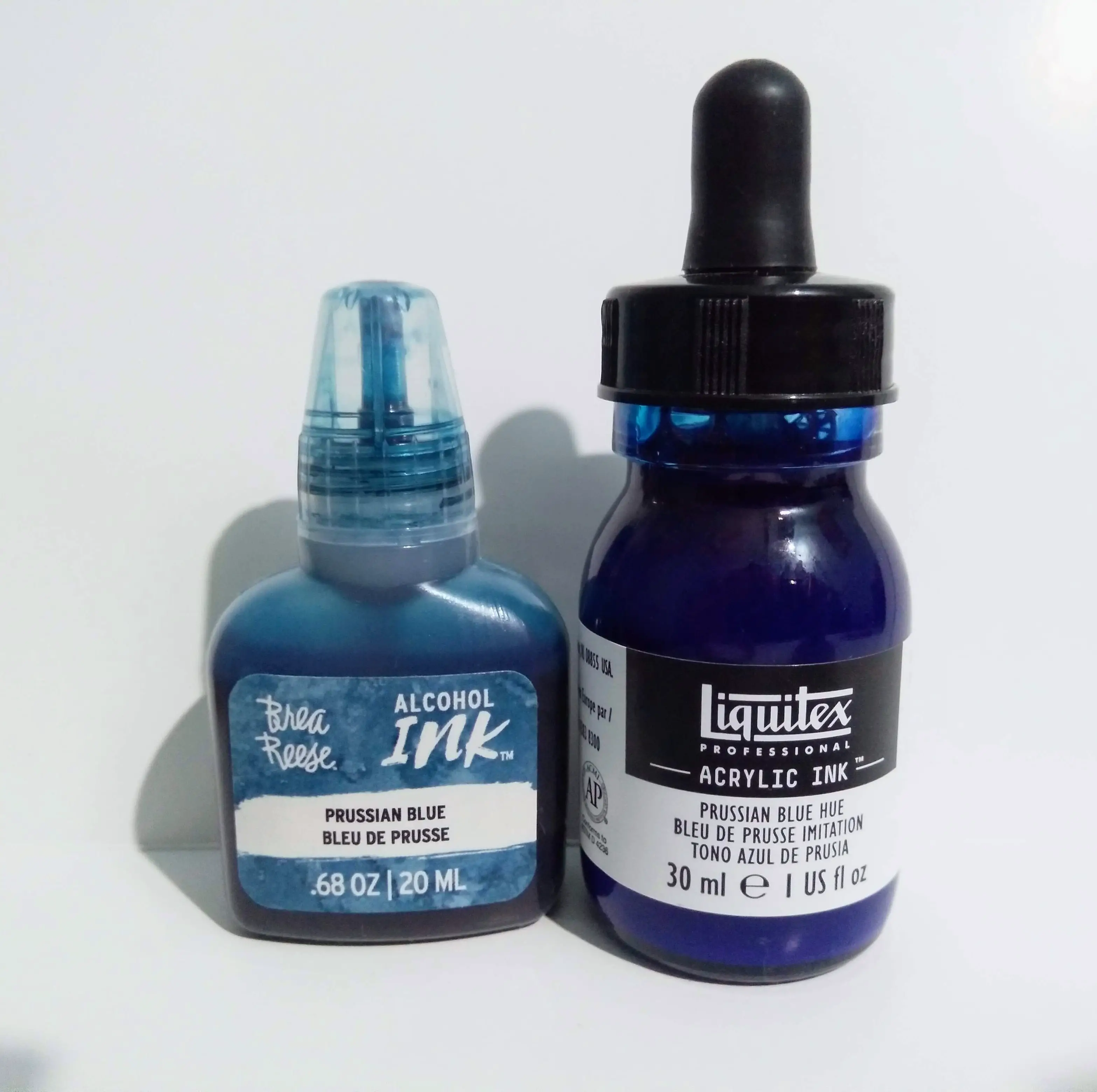
This might be because alcohol inks are dye-based and acrylic inks are pigment based. Pigments are more expensive than dyes. So alcohol ink is a good choice for people who are starting out with ink paintings and who want unique layers of paint. Acrylic inks are best to create archival quality paintings.
The bottom line
Alcohol ink art is popular among artists to create unique, delicate paint layers that are not possible to create with other art mediums. Acrylic inks are archival and best for artists who want to paint thinly in ink-like consistency. Unlike watercolors, acrylic ink is easy to build layers with.
FAQ
Can you mix acrylic ink with acrylic paint?
Acrylic ink and alcohol ink cannot be mixed together. They repel each other when mixed and look lumpy when dry. But both inks can be used separately in the same painting. Alcohol inks are can be used for their spreadability and acrylic ink for sharp lines.
Can you use acrylic paint to make alcohol ink?
Acrylic paint cannot be used to make alcohol ink because alcohol ink is originally made from dyes and not from pigments. You can dissolve acrylic paint in alcohol and increase its flow, but it is not possible to get the unique alcohol ink effect.
Use of alcohol ink and acrylic ink in resin art
Both acrylic ink and alcohol inks can be used in resin art. However, the most popular method is using alcohol ink with resin art due to its unique effect. Acrylic inks can also be mixed with resin.

